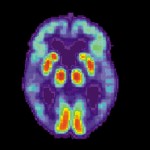Stem cell researchers at the Institute of Stem Cell Research at Helmholtz Zentrum Munchen discovered regions in the forebrain of humans that are capable of developing new nerve cells. This discovery is clearly antagonistic to the earlier thumb rule which suggested that dead nerve cells can never be regenerated, thus providing a new dimension to the treatment of Alzheimer’s disease.
 During the study, the team of researchers led by Magdalena Götz, director of the Institute of Stem Cell Research at Helmholtz Zentrum München and chair of the Department of Physiological Genomics of LMU, took a closer look at these regions in a mouse model. They recognised the areas capable of regeneration as GABAergic cells that use gamma-aminobutyric acid (GABA), a neurotransmitter of the central nervous system. Apart from these cells, they also found other nerve cells that regularly generated the so-called glutamatergic nerve cells, which use glutamate as neurotransmitter. Also called ‘progenitor cells’, these form new glutamatergic neurons following injury to the cerebral cortex.
During the study, the team of researchers led by Magdalena Götz, director of the Institute of Stem Cell Research at Helmholtz Zentrum München and chair of the Department of Physiological Genomics of LMU, took a closer look at these regions in a mouse model. They recognised the areas capable of regeneration as GABAergic cells that use gamma-aminobutyric acid (GABA), a neurotransmitter of the central nervous system. Apart from these cells, they also found other nerve cells that regularly generated the so-called glutamatergic nerve cells, which use glutamate as neurotransmitter. Also called ‘progenitor cells’, these form new glutamatergic neurons following injury to the cerebral cortex.
The research group was able to demonstrate this on the mouse model wherein the cells migrated into the damaged neighbouring cerebrum tissue and generated mature neurons. Accordingly, progenitor cells could then replace degenerate nerve cells. That progenitor cells give rise to glutamatergic nerve cells was proved due to presence of a transcription factor, Tbr2, specific only to the progenitor cells.
Nerve cells that use glutamate as their neurotransmitter are capable of storing and retrieving information. This revelation might be useful in Alzheimer’s dementia, wherein alterations in their signalling pathways play a significant role. “Now it will be interesting to find out whether this process also takes place in humans, particularly in Alzheimer’s patients,” said Magdalena Götz, “and also whether the process can be kept under control to avoid massive cell death.” One therapeutic approach would then be to attempt to stimulate the body’s own replacement mechanism.
Article by Snigdha Taduri for Biomed-ME
